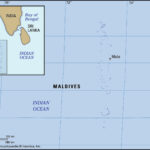The Balkans, a region steeped in history and cultural diversity, is located in the southeastern part of Europe. Often referred to as the Balkan Peninsula, this area is geographically complex and doesn’t have a universally agreed-upon definition when it comes to the exact countries it encompasses. However, when someone asks, “Where Are Balkan Countries?”, they’re generally referring to a cluster of nations in this fascinating corner of the European continent.
To understand where Balkan countries are, it’s essential to first grasp the general geographic boundaries. The Balkans are the easternmost of Europe’s three major southern peninsulas. Typically, the region is bordered to the northwest by Italy, to the north by Hungary, and to the north and northeast by Moldova and Ukraine. To the south, the borders are defined by Greece and Turkey or the Aegean Sea, depending on how broadly the region is interpreted. The Adriatic Sea washes its western coast, the Ionian Sea lies to the southwest, and the Black Sea to the east, further defining the location of Balkan countries within Europe.
While the geographic location provides a general idea, pinpointing exactly which countries are Balkan countries involves considering different perspectives – geographical, historical, and cultural. Most commonly, the following countries are considered part of the Balkans:
- Albania
- Bosnia and Herzegovina
- Bulgaria
- Croatia
- Kosovo
- Montenegro
- North Macedonia
- Romania
- Serbia
- Slovenia
These ten nations are often cited as the core Balkan countries, with all or significant portions residing within the Balkan Peninsula. However, the definition can be fluid. Greece and Turkey, for instance, have parts located within the geographic Balkan Peninsula and are often included in broader discussions about the Balkans, especially considering their historical ties to the region.
The term “Balkans” itself has Turkish origins, meaning “mountain,” and this aptly describes the region’s topography. Mountain ranges dominate the landscape, particularly in the west. The Balkan Mountains stretch across Bulgaria, the Rhodope Mountains line the Greek-Bulgarian border, and the Dinaric Alps follow the Adriatic coast down to Albania. These mountains significantly influence the climate, creating a divide between the central European climate in the north and central Balkans, and the Mediterranean climate along the southern and coastal areas.
Beyond geography, the Balkans are characterized by immense ethnic diversity and a complex history. The South Slavs are the most numerous group, forming majorities in many Balkan countries. Throughout history, the region has been influenced by powerful empires, including the Byzantine and Ottoman Empires, which shaped its cultural and political landscape for centuries. This history of diverse influences and, at times, conflict has contributed to the term “Balkanization,” referring to fragmentation and division.
Defining the Balkans definitively remains a challenge. Whether viewed geographically, historically, or culturally, the region presents a mosaic of nations with intricate connections and distinctions. Understanding where Balkan countries are located is just the first step in appreciating this dynamic and historically rich corner of Europe.

